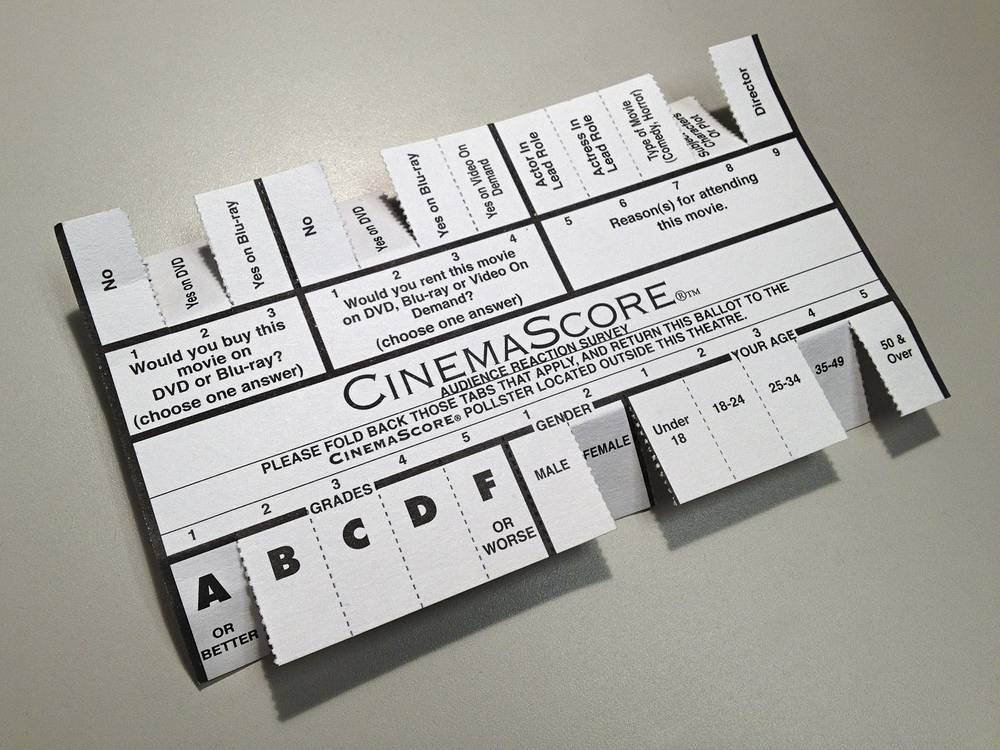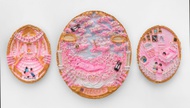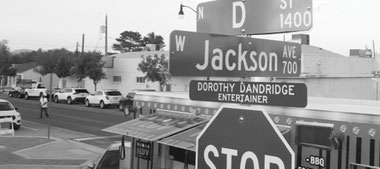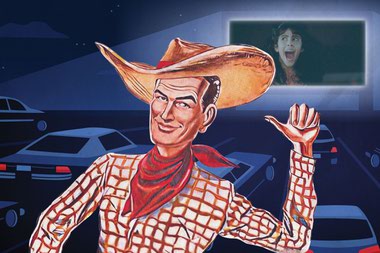“I’d rather be in the shadows,” says Ed Mintz, founder and president of movie research company CinemaScore. If you’ve read a story about a movie’s box-office performance in a publication like The Hollywood Reporter or on a website like Deadline, you’re probably familiar with CinemaScore, the company that polls moviegoers on a film’s opening night and assigns major releases an audience-voted grade, from A to F. CinemaScore grades are widely quoted in the entertainment press, and the grades for current releases are posted in various places in print and online (including at cinemascore.com and via the company’s app).
But despite the recent ubiquity of the CinemaScore brand, Ed isn’t spending his time schmoozing with studio executives or attending Hollywood premieres. He’s lived in Las Vegas since 1990, and he and his son Harold run the CinemaScore business from their suburban Vegas homes. “Our family basically are the employees,” Ed says. CinemaScore contracts with about 40 teams of pollsters in 30 cities around the country, part-time workers who hand out the company’s paper ballots outside movie theaters, but it’s Ed and Harold who collate the data, crunch the numbers and deliver reports to all the major studios.
More Local Film
“Basically, for the 30-some years, it’s been the same-looking thing,” Ed says of the simple six-question ballot, which has changed only with advents of DVD, Blu-ray and video on demand (for the question of whether viewers would rent/buy the movie they just saw). The idea to poll moviegoers came to Ed in 1978 after he walked out of a movie that critics had praised but the audience hated. At the time living in LA, Ed had been running a dental-billing system (“Very, very boring. I was sort of thrilled when that came to an end.”) and had a background in data collection and processing.
The company started slowly, with Ed drawing on his family to help out. “They all hated it. Everyone in the family basically was not thrilled with it,” he says.
Harold agrees: “I was doing polling on the street when I was 15,” he says. He polled all through high school and college in the early 1980s, before joining the company full-time. “It seems like I polled longer than that, because I hated it.”
Gradually, family members polling in LA grew to extended family members polling in Boston, and the client list grew to include LA’s Z Channel, Entertainment Tonight, AMC Theaters and various newspapers and magazines, including Entertainment Weekly, which has carried CinemaScore ratings for more than 20 years. By 2005, major studios started clamoring for the information, and today, “every major studio is a client,” Ed says. “Almost every intermediate studio is a client. I’d say we are 98 percent in.”
So on a Friday night at the Regal Cinemas at Red Rock, CinemaScore pollster Karen Lieberman stands outside a showing of The Guilt Trip, enticing patrons to bend back the tabs on the tried and true CinemaScore ballot. She runs through her patter as each group of people exits the auditorium: “Hi, we are doing an audience reaction to the movie you just saw. It just takes a minute to bend back your answers. It makes you the critic.” Nearly everyone in the small crowd (around 30 people) stops to fill out a card (typically the company needs 400-600 responses, from various cities, to compile its reports). Ed, his polling days long past, stands by, watching Karen and telling me about the company. Nobody notices him as they pass by. He’s in the shadows, just how he likes it.








Previous Discussion: